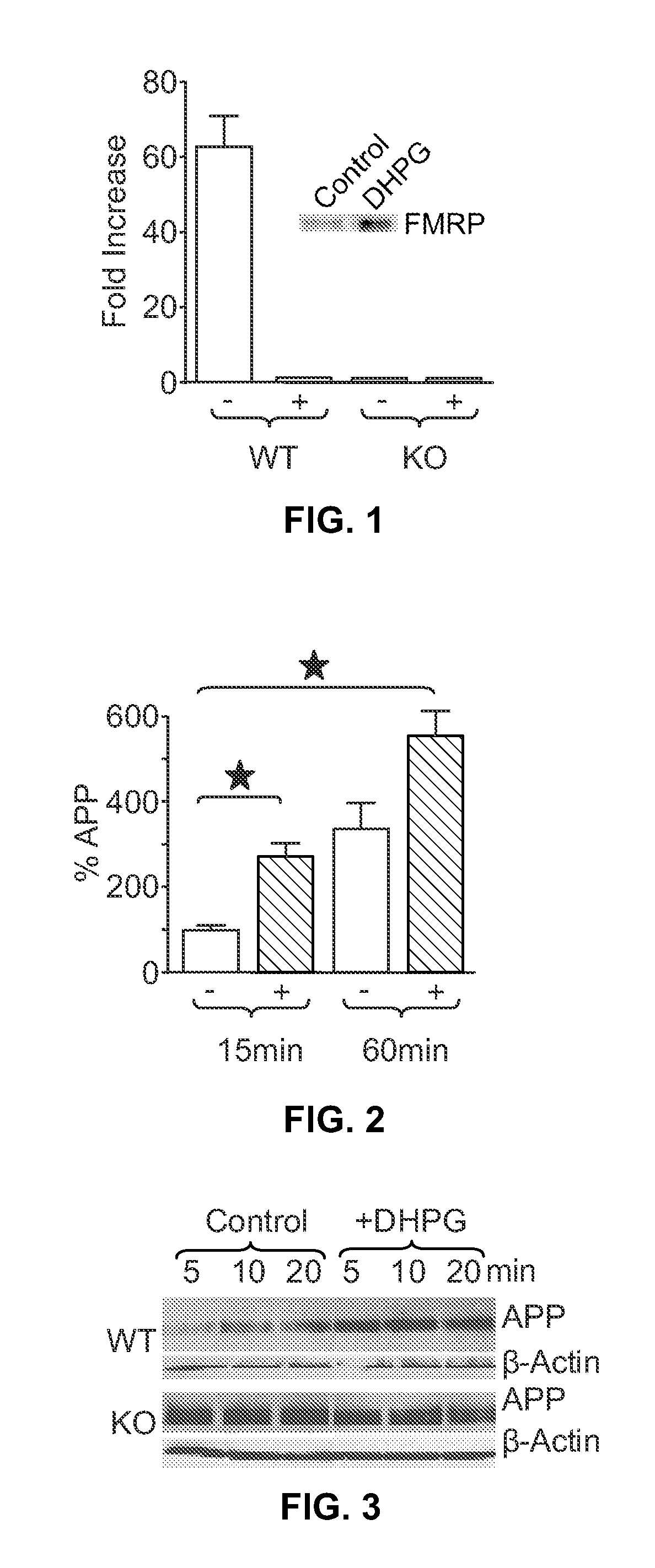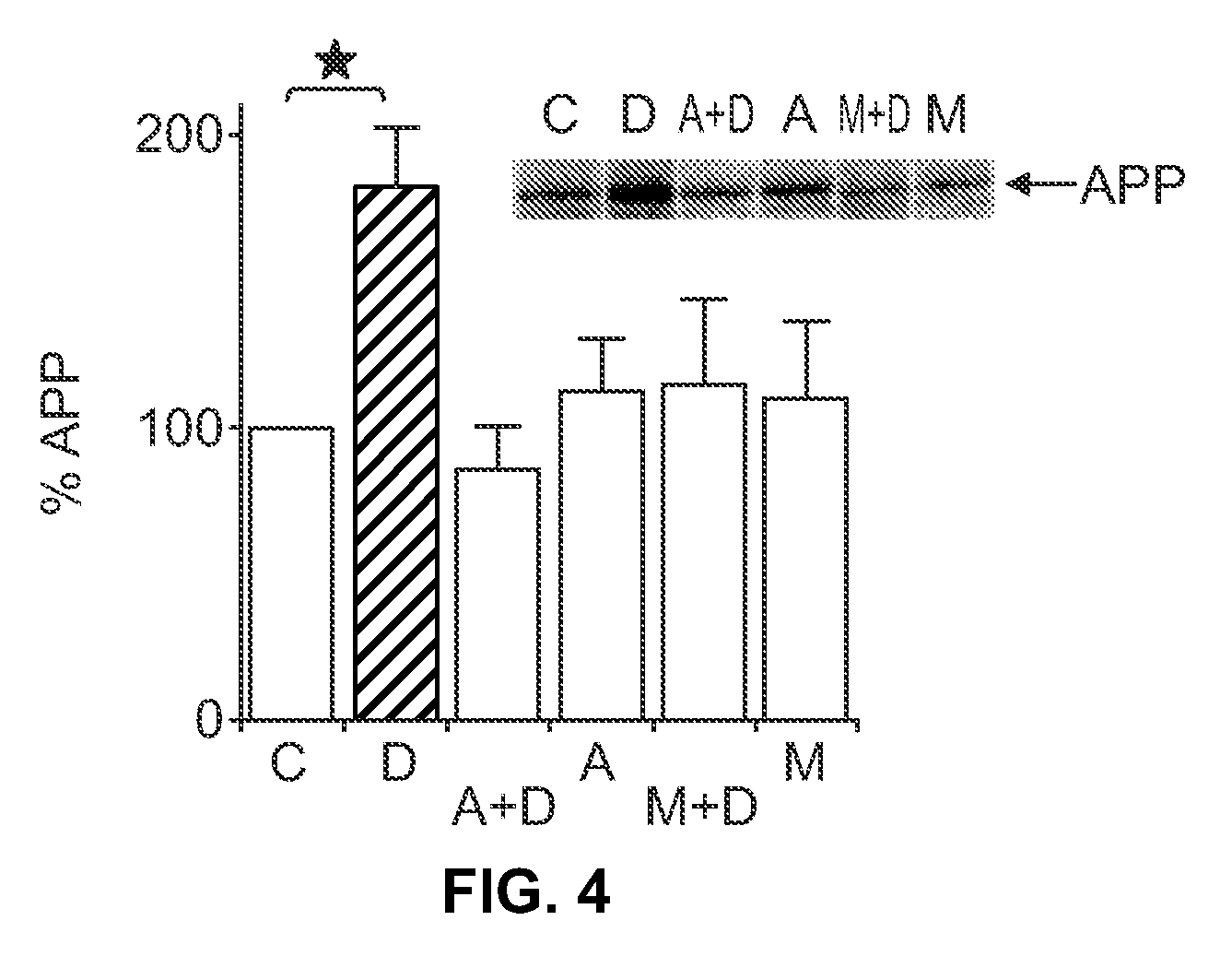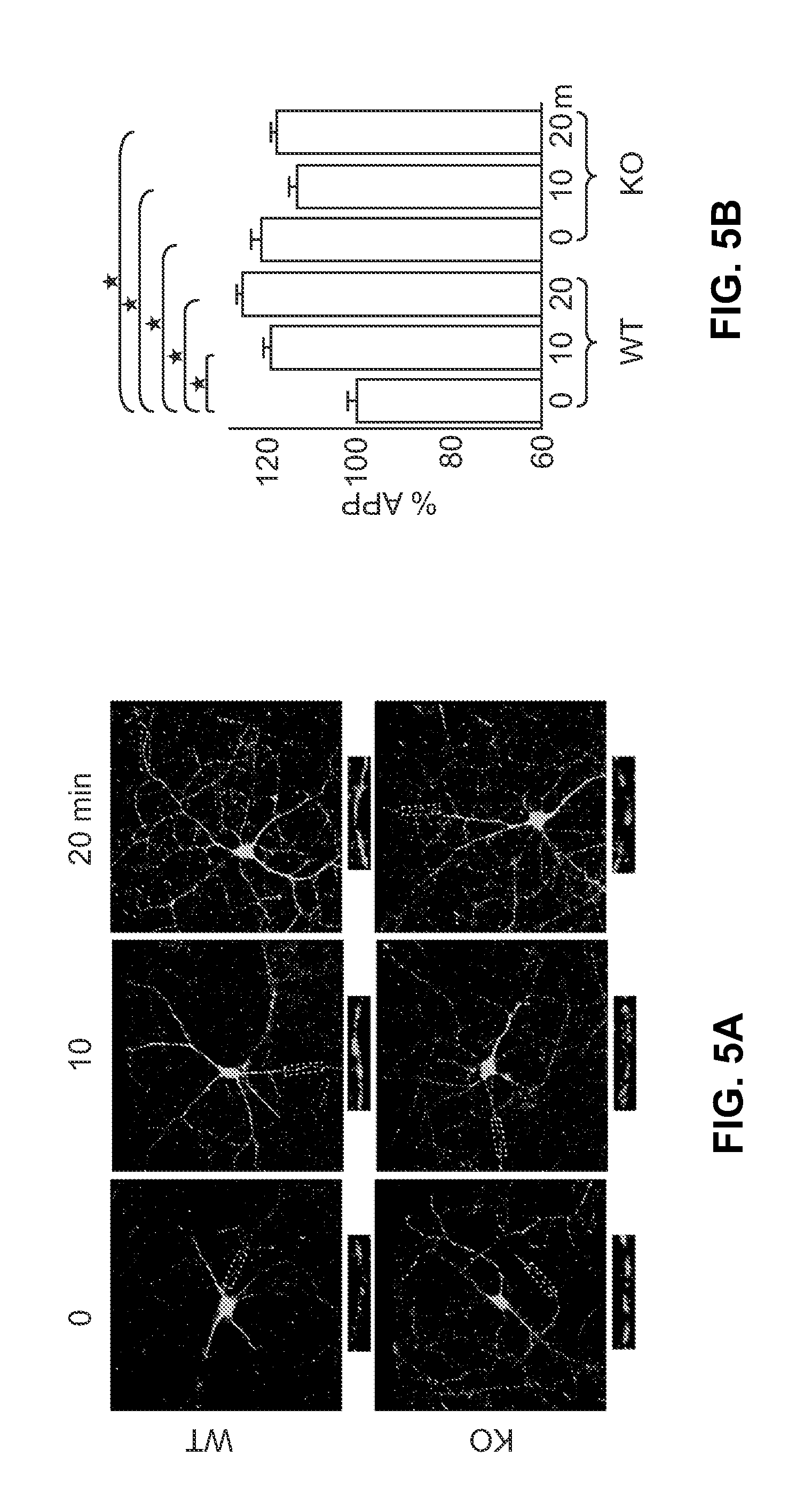Methods for Inhibiting Amyloid Precursor Protein and Beta-Amyloid Production and Accumulation
a technology of amyloid precursor protein and amyloid precursor protein, which is applied in the direction of heterocyclic compound active ingredients, drug compositions, instruments, etc., can solve the problems of affecting the development of fxs, difficult to assess age-related dementia in the mentally retarded, and known changes in phenotypes, so as to reduce activity or signaling, improve cognitive function, and improve the effect of cognitive function
- Summary
- Abstract
- Description
- Claims
- Application Information
AI Technical Summary
Benefits of technology
Problems solved by technology
Method used
Image
Examples
example 1
FMRP was Associated Directly with APP mRNA
[0106]To determine whether FMRP regulated APP expression, mRNA / protein binding studies were performed. More specifically, RNase protection and modified CLIP assays were utilized to assess FMRP protein interaction with APP mRNA. The modified CLIP assay (Ule et al., 2003 Science 302: 1212-1215) demonstrated that FMRP associated directly with APP mRNA at nt 699-796, as opposed to indirect interaction for example in an mRNP complex. Pelletted material from anti-FMRP immunoprecipitations of whole-cortex lysate were washed once with immunoprecipitation buffer and once with DPBS before digestion with ribonuclease T1 (0.8-4.0 U) in a 100-4 reaction volume for 30 min at 37° C. with occasional mixing to disperse the magnetic protein A beads. The digested samples were washed twice with DPBS to remove RNA fragments. Protected RNA was isolated with TRI-Reagent and analyzed by RTqPCR. The primer sequences for real time PCR are listed in Table 1. The delta...
example 2
Activation of Glutamate Receptor Increases APP Protein Production
[0110]To determine whether modulation of mGluR affected APP translation and protein production, SN and neuronal cells were contacted as described below with DHPG, an agonist of group 1 mGluRs. The mechanism underlying FMRP-mediated translational repression is controversial (Bear et al., 2004 Trends Neurosci 27, 370-377), and alterations in the association of FMRP with polyribosomes, small nontranslated RNAs or other proteins have all been proposed (Feng et al., 1997 Mol Cell 1, 109-118; Zalfa et al., 2003 Cell 112, 317-327; Bagni et al., 2005 Nat Rev Neurosci 6, 376-387; Ceman et al., 1999 Mol Cell Biol 19, 7925-7932).
[0111]SN were isolated from normal mouse brain and then treated with the group 1 mGluR agonist DHPG. Immunoprecipitation studies were performed to determine if FMRP associated with APP mRNA. FMRP-associated APP mRNA was detected in untreated controls, whereas treatment of WT SN with DHPG resulted in disso...
example 3
FMRP Regulated Synaptic Synthesis of APP and Regulated Dendritic APP Levels in Cultured Neurons
[0114]To further assess FMRP regulation of APP levels in brain, cortical SN were prepared from WT mice and overall protein synthesis analyzed in response to DHPG (100 μM)-induced mGluR5 activation. SN were metabolically active as assessed by 35S-Met incorporation. To assess de novo APP synthesis, 35S-labeled SN were immunoprecipitated with anti-APP antibodies. After 15 min of incubation, untreated SN were found to translate only modest amounts of APP; however, APP translation rapidly increased by (2.7-fold) following DHPG treatment. After 1 hr, APP remained elevated in stimulated SN over control, but the difference was less (1.6 fold) than at 15 min, suggesting more persistent translation in the unstimulated controls, slowing of new synthesis after stimulation and / or compensatory protein turnover in the DHPG-treated samples (FIG. 2).
[0115]In order to assess changes in steady-state APP leve...
PUM
| Property | Measurement | Unit |
|---|---|---|
| pH | aaaaa | aaaaa |
| concentration | aaaaa | aaaaa |
| volumes | aaaaa | aaaaa |
Abstract
Description
Claims
Application Information
 Login to View More
Login to View More - R&D
- Intellectual Property
- Life Sciences
- Materials
- Tech Scout
- Unparalleled Data Quality
- Higher Quality Content
- 60% Fewer Hallucinations
Browse by: Latest US Patents, China's latest patents, Technical Efficacy Thesaurus, Application Domain, Technology Topic, Popular Technical Reports.
© 2025 PatSnap. All rights reserved.Legal|Privacy policy|Modern Slavery Act Transparency Statement|Sitemap|About US| Contact US: help@patsnap.com



